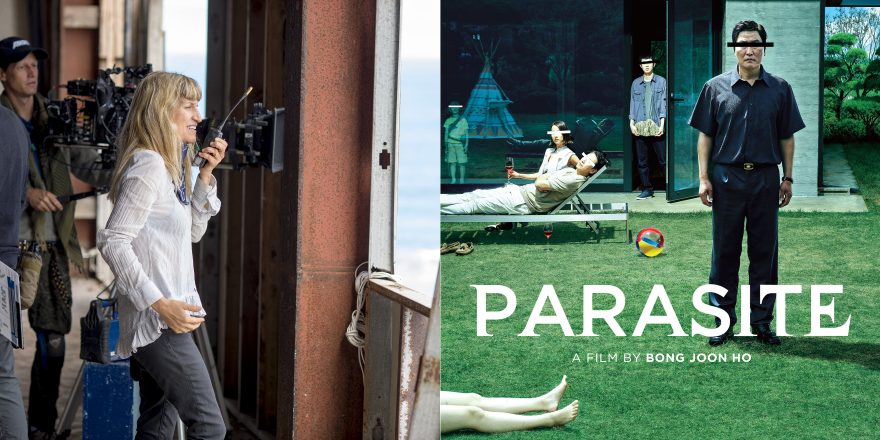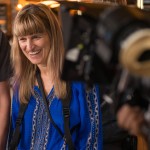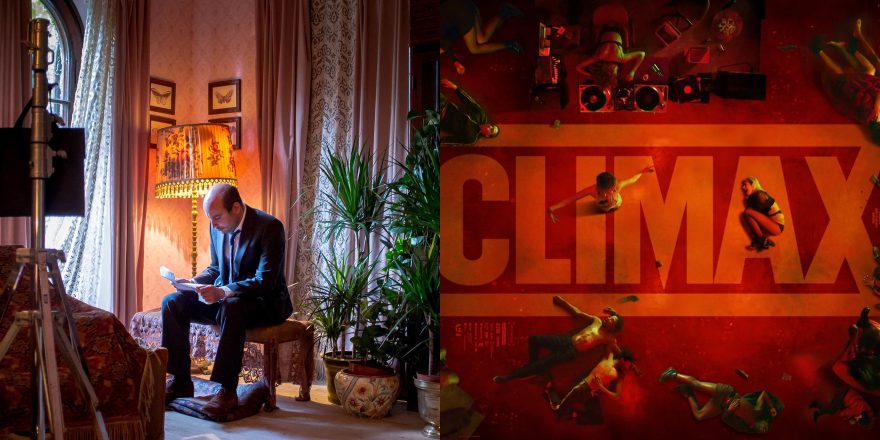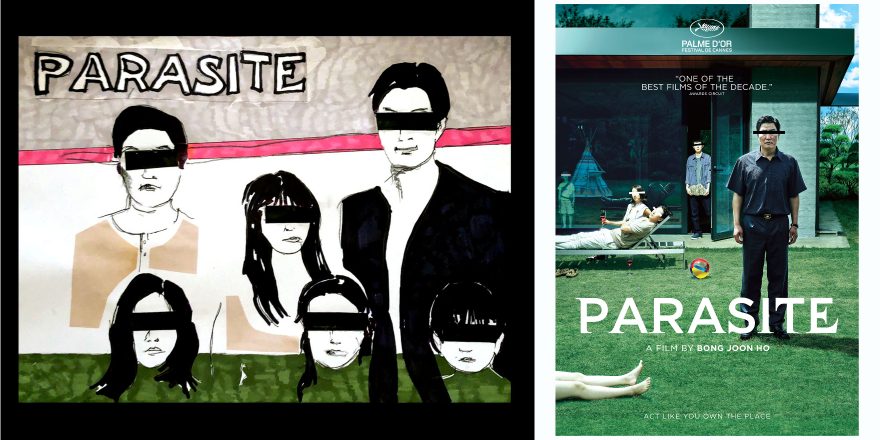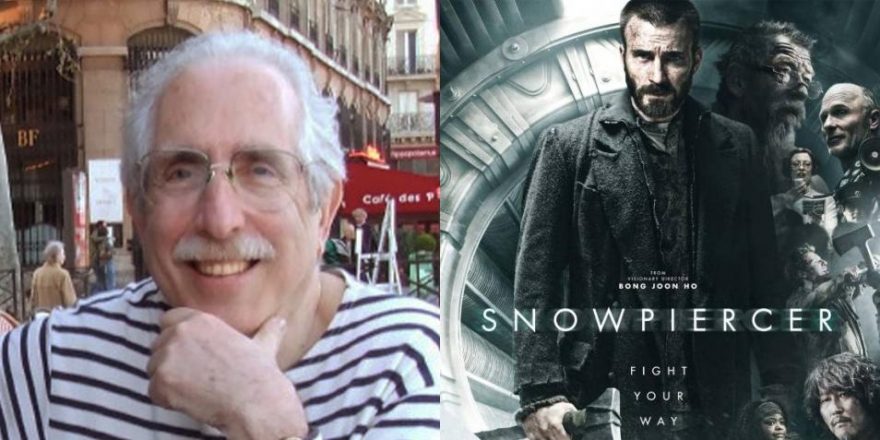I was lucky enough to see Parasite at its premiere in Los Angeles, and also to meet Bong Joon-ho. At the screening, I was given the cool black line across the eyes from the poster and walked up to him wearing it. I don’t think he knew about them, so he was like, “Whoa!” and I said, “I loved your movie!” Then we had a photo taken together.
I was struck by the movie on so many levels. Number one, I’m an architect and so of course I fucking loved what they did with the architecture in the film, and the parallels between the big house the rich family lives in and the cramped little apartment where the protagonists live. In the big house, there’s the wide, long window which looks out onto a gorgeous garden where we can observe the beauty of the rain, and in the apartment, there’s a window that looks out onto the very crowded neighborhood – and a view of a guy pissing! The windows, the framing and the architecture just blew my mind – all the layers that kept being peeled back, all the details.
I didn’t know that much about Parasite before seeing the film, which was perfect. I knew, of course, that it had won the Palme d’Or at Cannes, but I didn’t know anything about the plot, just that people loved it. What I didn’t expect were all the twists and turns, so they were really beautiful to experience. There are so many amazing scenes that keep you guessing, keep you on edge, make you horrified, make you hate a character. And just when you think you’re comfortable and know where a scene is going to go, Bong does a 180 again!
There’s a moment about an hour into the film where you think, “What just happened? Where did this movie go?” It doesn’t go where you think it’s going to – and then it goes to the next level, and the next level, and keeps deepening the social commentary and building on those layers – visually, emotionally, in the dialogue – in such a brilliant way.
The way we’re made to respond to the characters is also brilliantly controlled, and so fun. At the beginning, we the audience have so much sympathy for the family – and then they start doing such horrible things. But even though they’re committing these despicable acts, you’re still with them, you still care about them.
Since seeing Parasite at the premiere, I was sent a screener of the film, so I’ve enjoyed rewatching it, relishing and reliving amazing little details in it. Every single scene has multiple layers that you can just dive into. It’s so cool.
I think being an architect has really helped my work as a director. In architecture school, you learn to previsualize what a building will look like, how it’s going to flow through space, how it’s going to affect the people living in it. You’re coming up with your narrative for your building, and you’re conceiving something that doesn’t already exist. You’re creating something from nothing.
Before becoming a director, I was a production designer and I remember standing out in the middle of the desert in Arizona with David O. Russell on Three Kings. I was saying to him, “The camp is going to be here and this is going to be the minaret and this is going to be a building.” I was showing him my drawings and my models, but standing on a completely empty desert and he was looking at me like I was crazy! As an architect, you have to see it in your head, and as a filmmaker, it’s the same thing. You read a script – or you write a script – and you see how everything visually is going to tie together. And in Parasite, Bong Joon-ho makes the architecture work for the filmmaking, for the style, on every level. It’s beautiful, and it’s the perfect example of how architecture and film work together in a beautiful way.
I’ve never had the opportunity to work on one of those very visually striking projects that marries architecture and production design with directing, but I keep pitching those ideas. I’m currently pitching a radical scripted TV show about two young architects finding their way in the world, which I’m very excited about. Architecture affects you, whether you’re conscious of it or not – how much natural light you get in a room affects your brain, affects your emotions. As an architect, you can design something that helps solve problems, makes the world better, is more environmentally friendly, and makes your life more fun and more beautiful.



